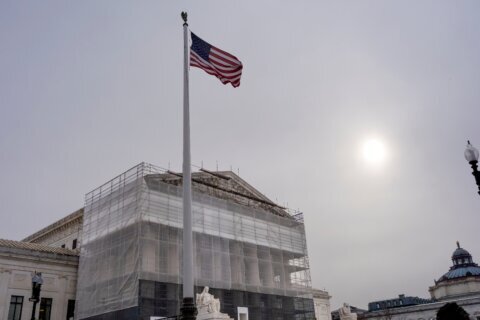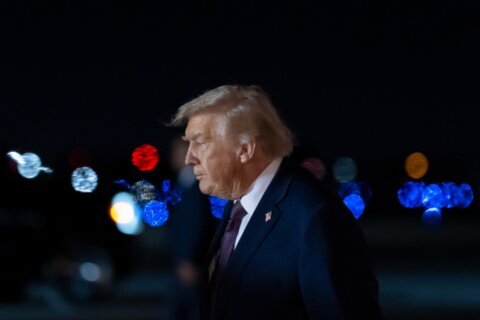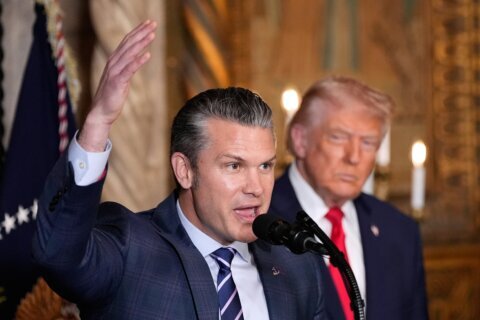WASHINGTON — A bipartisan group of federal legislators from the D.C. region is criticizing the executive order issued by President Donald Trump that puts a hiring freeze on much of the federal government.
Trump signed a memorandum Monday, temporarily freezing hiring for some federal government workers as a way to reduce payrolls and rein in the size of the federal workforce.
“An across-the-board federal hiring freeze is a mindless way to manage,” said Rep. Gerry Connolly, D-Virginia. Connolly claimed the freeze would “have a depressing effect on our ability to recruit and retain the next generation of federal workers.”
Also in Virginia, Rep. Barbara Comstock, a Republican, said she does not support “this type of across-the-board freeze.”
“The federal budget cannot be balanced on the backs of our federal workforce,” Comstock said. “It is better to look at priorities and areas where appropriate cuts can be made and where we can consolidate efforts or identify unnecessary costs that can be eliminated.”
Trump had raised the possibility of a hiring freeze during the campaign.
Sen. Tim Kaine, D-Virginia, told WTOP that Trump’s campaign promise to drain the swamp was “offensive” and “outrageous.”
“Pitching the notion that the federal workforce is corrupt or colluding with special interests is frankly offensive to patriotic and hard working people,” Kaine said.
D.C. Delegate Eleanor Holmes Norton, also a Democrat, spoke out against the order on Twitter, calling it an “attack” on federal employees.
At a news conference Monday, press secretary Sean Spicer said the freeze ensures taxpayers get effective and efficient government and said it “counters the dramatic expansion of the federal workforce in recent years.”
The Office of Personnel Management says the federal government hired 221,000 workers in fiscal 2015, the most recent year for which data is available. The number excludes uniformed military personnel.
Kaine said the federal government today as a percentage of the total workforce was the smallest that is has been in 70 years.
“They haven’t been honest about the facts,” Kaine said. “The federal government at the end of the Obama term is about the same size as it was as the beginning, while the population has been growing.”
Even as a solution for curbing federal expansion, an across-the-board approach wouldn’t work, Kaine said. A Government Accountability Office study of both Democratic and Republican administrations that had tried across-the-board freezes in the past showed that it hurt operations of a government, hurt citizens and didn’t save money, he said.
Sen. Ben Cardin, D-Maryland, also found such a freeze “inefficient, costly and counterproductive.”
“We cannot attract and maintain highly qualified personnel with such draconian steps that cut off the pipeline of fresh and experienced talent,” Cardin said.
Sen. Chris Van Hollen, D-Maryland, called Trump’s order a “knee-jerk decision” and “short-sighted.”
“The size of each federal agency’s workforce should rise or fall based on the priority of their missions, not an arbitrary freeze,” Van Hollen said.
The hiring freeze temporarily prevents federal agencies from filling vacant positions and creating new positions, except when necessary to meet national or public security responsibilities, Spicer said.
In addition, the order prohibits agencies from hiring private contractors to perform work “to circumvent the intent” of Trump’s memo. Federal agencies can reallocate money “to meet the highest priority needs and to ensure that essential services are not interrupted and national security is not affected,” the memo read.
Trump’s memo said the hiring freeze would remain in effect until his administration recommends a long-term plan for reducing the size of the federal government’s workforce through attrition. That plan is due within 90 days, according to the memo.
The Associated Press contributed to this report.








